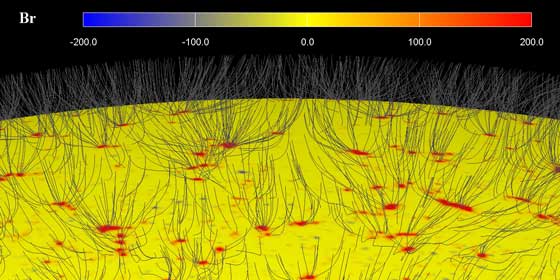"Hinode" discovered strong magnetic field patches in the Sun's polar region
| Science

TA Japan-US-Euro international research team including the National Astronomical Observatory of Japan observed the solar polar region with the Solar Optical Telescope aboard the solar observating satellite "Hinode", and discovered strong magnetic field patches which are more than 1000 Gauss, comparable to field strength of a sunspot. The discovery was made by the result of the first successful acquisition of clear images of solar polar region by "Hinode".
The observation showed that the magnetic field in the solar polar region were of isolated, patch-like shape and broadly distributed in the entire polar area. They are also very small and have short life compared to the sunspot. Before Hinode's result, it had been thought that only broad and weak magnetic fields existed in the solar polar region. We can say that this result has changed our recognition of how the solar polar region is.
The observation of the solar polar region is extremely important also for forecasting the solar activity in the future. Currently the solar activity is remaining quiet much longer than expected, and the research team is continuing a precise observation of the solar polar region by "Hinode". The research team wants to clarify the mechanism of the formation of the sunspot that causes solar flares and terrestrial magnetic disturbance, and the mechanism to accelerate the solar wind, by continued observations in the future. In addition, it is expected that the study of the influence of the solar cycle and the Sun on the global environment would be advanced by the research based on the observational data of "Hinode".
These findings were published in the December 1, 2008 issue of the Astrophysical Journal and in the November 20, 2009 issue of the Astrophysical Journal Letters.
Link
More info: Hinode page